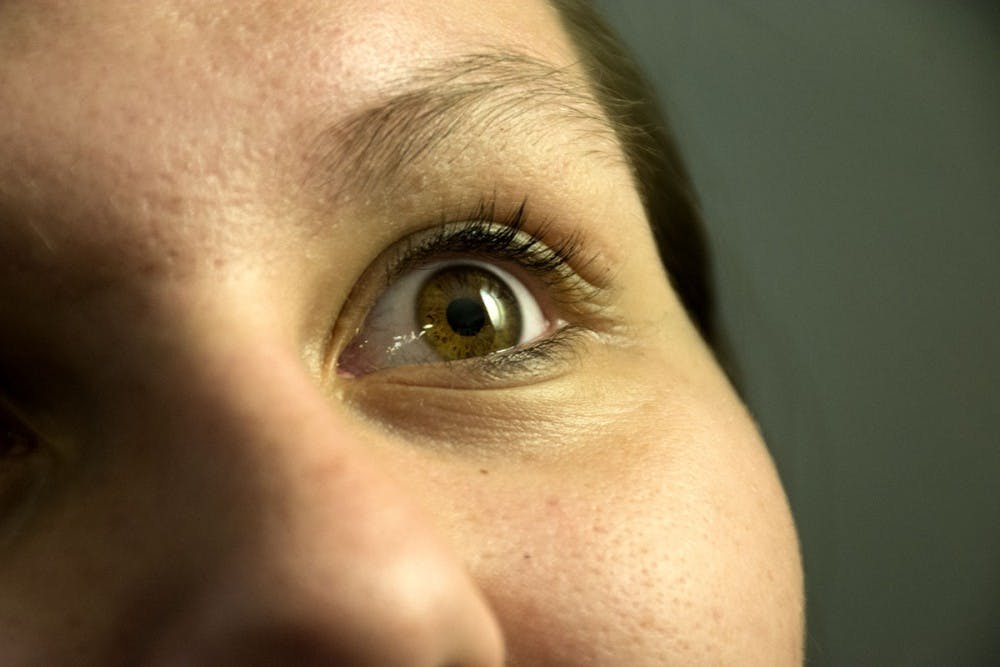In response to increased numbers in patient population and in groups of people at a higher risk for certain eye diseases — such as Hispanic and aging populations — the University Health System recently opened an expanded, comprehensive eye clinic at U.Va. Medical Park Northridge in Albemarle County Feb. 11. The expanded clinic includes nine additional clinic rooms and specialty care services, such as cornea and retinal care, along with treatments for cataracts and uveitis, a form of eye inflammation.
“We have patients from everywhere in the state, and we need to provide services for them,” said Peter Netland, professor and chairman of the ophthalmology department. “We want to broaden and increase our impact in the community, not only the local community … [but] to some extent, the national community.”
The University had approximately 30,000 inpatient visitors and 1.1 million outpatient visitors last year, according to Netland. Additionally, ophthalmic clinic visits and surgeries are expected to increase at a rate of over 3 percent per year for 10 years, partly due to increases in elderly populations. Expanding the eye clinic is meant to address this disproportionately larger and increasing need for outpatient care at the University, Netland said.
“Part of the intent is to address our patient population needs and try to provide more comprehensive services so that people can get the kind of care that they need,” Netland said. “We have a very high volume of patients.”
Aging of the population has resulted in a rise in the prevalence of various eye conditions at both the local and national levels. Netland said that glaucoma, a disease that damages the optic nerve and causes a gradual loss of vision, is expected to nearly double or triple over the next 10 years, according to local and national projected trends. There is also an increased prevalence of macular degeneration — a condition in which the central part of the retina degenerates — which according to Netland is the number one cause of blindness in the United States.
Demographic changes have also resulted in an increased number of people who are at high risk for certain eye diseases. For instance, Netland said that there have been increases in the Hispanic population and that this group is more at risk for diabetic retinopathy, a complication of diabetes that is a leading cause of blindness.
Besides addressing the needs of the growing general and high-risk patient population, the expansion also creates more space for new faculty and residents to work at the University’s eye care clinics. Recently, the ophthalmology department has been approved to take on four additional residents. As more residents and faculty are hired, more patients can be seen — but there needs to be more space for the increase.
“Our mission is to train residents, take care of patients with complications … from all over the world and to do research,” University neuro-ophthalmologist Steven Newman said. “In order to do that you need to have the facilities, the resources, the technicians, the support and the [operating room] space.”
Although the added space will result in shorter wait times for patients and allow the eye clinic to take on another resident, having four eye clinics in different locations presents logistical problems in communication between the facilities.
“The problem with [having four clinics] is that it’s very inefficient because we end up duplicating a lot of things,” Newman said.
For example, duplications occur while checking patients in at two different locations for care. Part of the reason for this is that certain technologies are only located at one facility. Newman said this results in inefficiencies because the doctors have to send patients to other locations.
The location at Northridge may also be difficult for students to reach if they do not have access to a car. While Student Health offers primary care for eye concerns — including eye exams and management of certain conditions — it does not provide optician exams, glasses or contacts, according to Jessica Simmons, the interim director of Student Health. Additionally, when students have serious or urgent concerns, Student Health refers them to ophthalmology.
Although the new clinic is at an off-Grounds location, building a separate eye clinic at Northridge aligns with the University Health System’s goal of moving clinics out of the West Complex, which is an “under-performing and substandard care delivery platform,” according to a June 2018 report from the Board of Visitors.
The department of ophthalmology will continue to transition out of the West Complex and expand beyond the new addition at Northridge. The ongoing expansion was estimated to cost between $40 and $60 million, according to the Board report. Newman explained that the long-term goal is to find a single space in which the clinics will be in one central location and still be connected to the hospital.
Although plans for further expansion have been approved, Netland said that the department does not know when a central location will be built.
“We don’t know exactly when [the central location] will happen,” Netland said. “It’s being planned, it’s been approved, we are planning it right now … We are looking toward expanding more in the future.”







